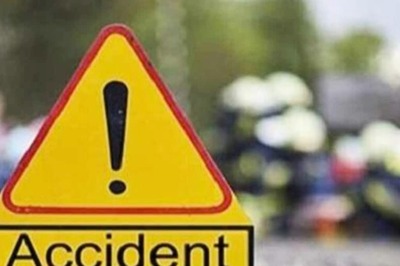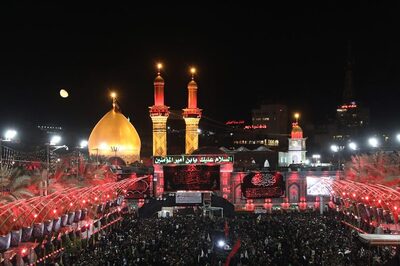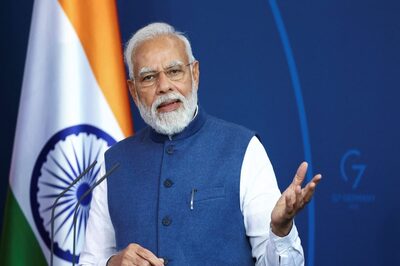
views
New Delhi: The Supreme Court will on Thursday pronounce its judgment on a clutch of review petitions seeking re-examination of its decision to allow entry of women of all age groups in Kerala’s Sabarimala Temple that had sparked violent protests.
The chief point of reconsideration, as the judges sit in review, will be about the scope of the court’s interpretation and consequent intervention into matters of faith with the petitioners underscoring the nature of the deity and age-old beliefs.
The other side has asserted that discrimination of women on the basis of their physiological condition, namely menstruation, is violative of their constitutional right to equality and their right to pray.
In a majority 4:1 verdict, the apex court had last year lifted the ban that prevented menstruating women between the ages of 10 and 50 from entering the Ayyappa shrine Kerala. The five-judge bench, besides Judge Indu Malhotra, had held that this age-old Hindu religious practice was illegal and unconstitutional.
The fallout from the Supreme Court’s ruling was that it led to massive protests by right-wing groups, aided by political parties, who called it an attack on the Hindu faith and customs and did not allow women to enter for months despite the ruling. The protests intensified after two women managed to enter the shrine in January with the aide of cops.
As the drama unfolded in the run-up to the 2019 Lok Sabha elections, political parties also took up the issue, hoping it would pay dividend on the ballot. The BJP, was the most vociferous, but failed to win a single seat from the state.
All the political and cultural drama surrounding the temple, which went silent post the Lok Sabha polls, is at the brink of resurgence ahead of the Supreme Court’s Thursday verdict, which will be delivered by a Constitution Bench led by CJI Ranjan Gogoi.
Other members of the bench are Justices RF Nariman, AM Khanwilkar, DY Chandrachud and Indu Malhotra.
News18 explains the case history of Sabarimala ahead of the verdict and the temple’s reopening on November 16 for the two-month long ‘mandalam’ season.
Why Women Were Barred
Considered the abode of Lord Ayyappa, the Sabarimala temple is located in the Periyar Tiger Reserve in Pathanamthitta district in Kerala. The temple is the site to one of the largest annual pilgrimages in the world as every year, millions of people wait for hours to climb the 18 gold-plated steps leading to the shrine.
Situated on a hilltop, the temple is dedicated to the Hindu celibate deity Ayyappan, who is believed to be the son of Shiva and Mohini – the feminine incarnation of Vishnu. Its administrative and legal duties are managed by the Travancore Devasvom Board, an affiliate of the Kerala government.
Now, there are two different versions as to why menstruating women were not allowed inside the famous shrine. One legend says that Lord Ayyappa does not receive menstruating women in the temple in honour of Malikapurathamma – a lady-demon who was defeated by the Lord after which she proposed marriage to him. The Lord had set the condition that he would marry her the day devotees stop visiting him at Sabarimala.
The other legend considers Lord Ayyappa as a historical figure born into the royal family of kingdom located in Patthanamittha, who had shunned all worldly desires including contact with women, after defeating an Arab intruder called Babar or Vavar.
Given both the historicity and mythology associated with the shrine, pilgrims say they have observed a de facto bar against women between the ages of 10 and 50, thinking that to allow menstruating women inside would disturb the temple’s celibate deity.
Although the historical record suggests that women had sporadically visited the temple for years, Kerala’s High Court made the tradition a law in 1991, which was subsequently overturned by the Supreme Court.
High voltage protests
High voltage protests had followed after the verdict as a dozen women who tried to visit the temple in October last year being forced to turn back by protesting men.
The protests, however, turned to pandemonium in the days after two women - Bindu Ammini, a lecturer at Kerala’s Kannur University, and Kanakadurga, a civil servant – managed to enter the temple on January 2 and offer prayers.
In the pitched battle, on one side there were devotees of Lord Ayyappa, right-leaning organisations and the BJP, who cited tradition to oppose the apex court’s judgment, while the other side were women rights activists, lawyers and left leaning parties, including the ruling party CPI (M), who said it would impose the SC order.
Protests got so violent that Kerala social justice minister KK Shailaja had to caution against the use of children as ‘shields’ during ‘namajapa’ (chanting mantras) protests. Bombs were also hurled at the houses of CPI(M) MLA AN Shamseer in Madapeedikayil, BJP leader and Rajya Sabha member V Muraleedharan at Vadiyil Peedikia, and former Kannur district secretary of CPI(M) P Sasi. Over 3,000 people were arrested for the protests.
Earlier, the Kerala government also moved the Supreme Court seeking transfer of pending pleas related to the temple from the High Court to the apex court, alleging that members of “right-wing outfits” were obstructing the implementation of its verdict.
The Case Files
The legal battle of Sabarimala had begun in 1991 when Mahendran, a devotee, wrote a petition stating that the temple board was violating temple rules by allowing VVIP women into the sanctum. The Division Bench of the Kerala High Court had then ruled that women between ages of 10-50 will not be allowed to enter the shrine as per existing traditions.
The ruling was in 2006 challenged in the Supreme Court by the Indian Young Lawyers Association. Their PIL argued that barring women from entry violated the right to equality under Article 14 and freedom of religion under Article 25 of the constitution.
The matter was originally referred to a three-judge bench in 2008 and came up for hearing in January 2016. The following year, former Chief Justice Dipak Misra, Justice R Banumathi and Justice Ashok Bhushan ordered a Constitution Bench to pass judgment on the case.
The September 28, 2018 judgment allowing entry of women was passed by Chief Justice Misra, Justice AM Khanwilkar Justice RF Nariman, Justice DY Chadrachud and Justice Indu Malhotra.
There are as many as 65 petitions filed against the apex court’s judgment – 56 review petitions, four writ petitions and five transfer pleas that were filed after the protests in Kerala.
Key parties who have submitted review petitions include National Ayyappa Devotees (Women’s) Association, Nair Service Society and All Kerala Brahmins Association.
The National Ayyappa Devotees (Women’s) Association were the first to submit a review petition. They slammed the court for entertaining a PIL on behalf of Indian Young Lawyers Association – who were not Ayyappa devotees. The Ayyappa Association also put forth a similar argument.
The TDB, which runs the Sabarimala temple, had made a U-turn to support the Supreme Court’s order allowing women of all ages to enter the shrine. It had joined the Kerala government to oppose a batch of pleas seeking review of the historic verdict. Then, the Board later asserted that its latest position was not due to any political pressure.
Pleas for Reconsideration
Senior advocate K Parasaran, appearing for Nair Service Society, had assailed last year’s majority verdict, saying Article 15 of the Constitution throws open for public the secular institutions of the country but does not deal with religious institutions.
Seeking a reconsideration, he said the Article 17 which deals with abolition of untouchability in society was wrongly used by the court in its judgment as exclusion of certain age groups of women was not based on caste.
Senior advocate AM Singhvi, representing TDB’s ex-chairperson, also argued in favour of a review of the judgment. "There is no exclusion of women. There is no exclusion of men. There is no exclusion of a class of men or women based on religion and caste. There is an exclusion inside a class (women). Hence Article 17 (removal of untouchability) will not apply,” Singhvi said.
Senior advocate V Giri, who represented the shrine thantry, said the temple allows entry of all persons inside, and there is no exclusion of any class of citizen based on caste, gender and religion




















Comments
0 comment